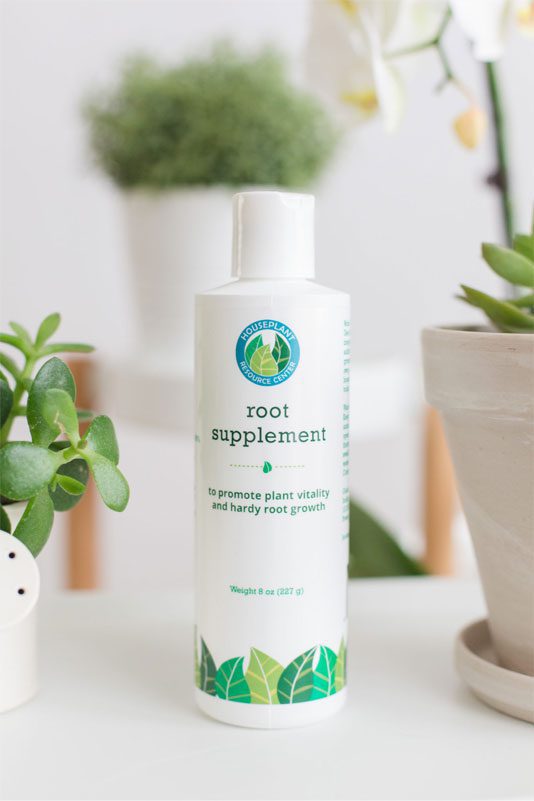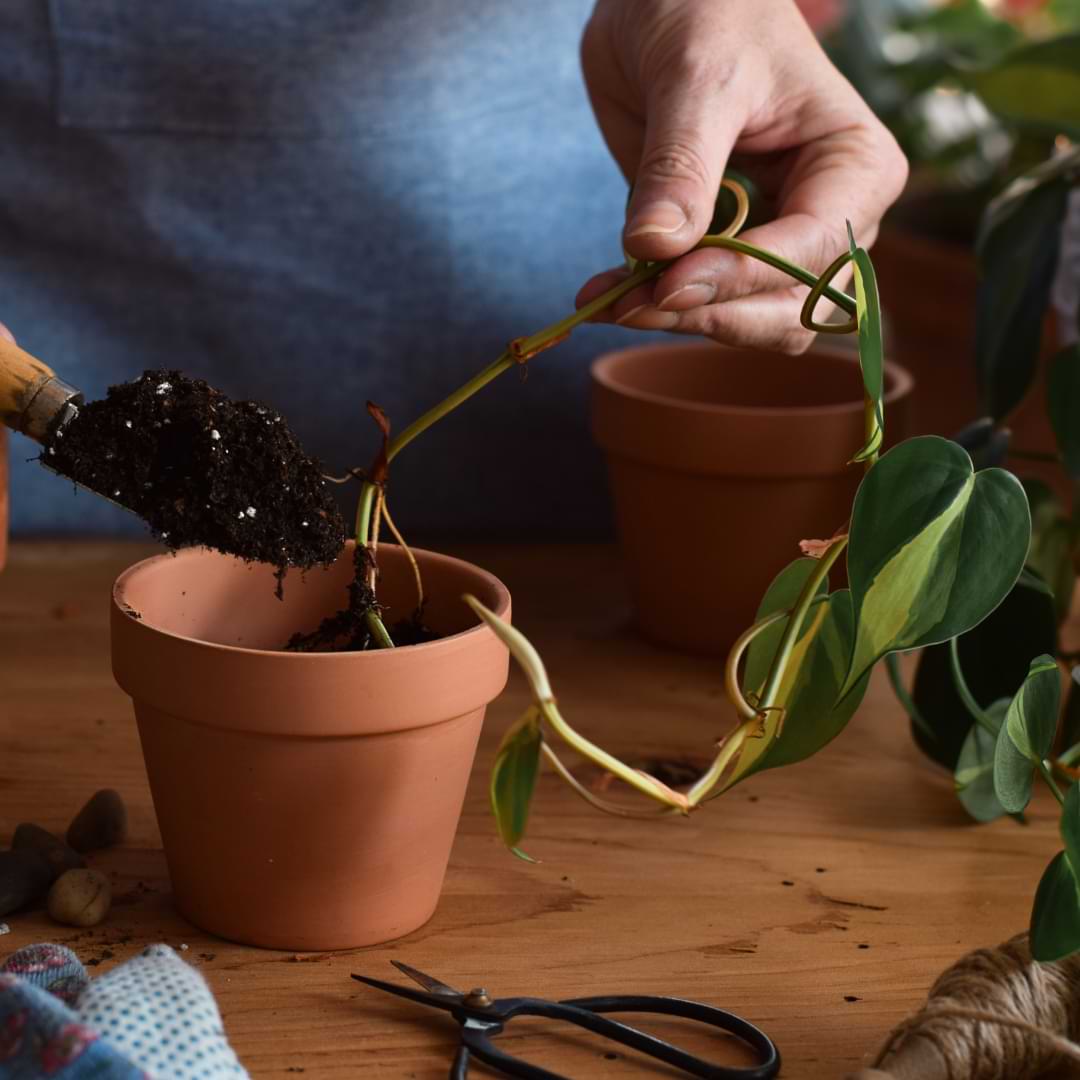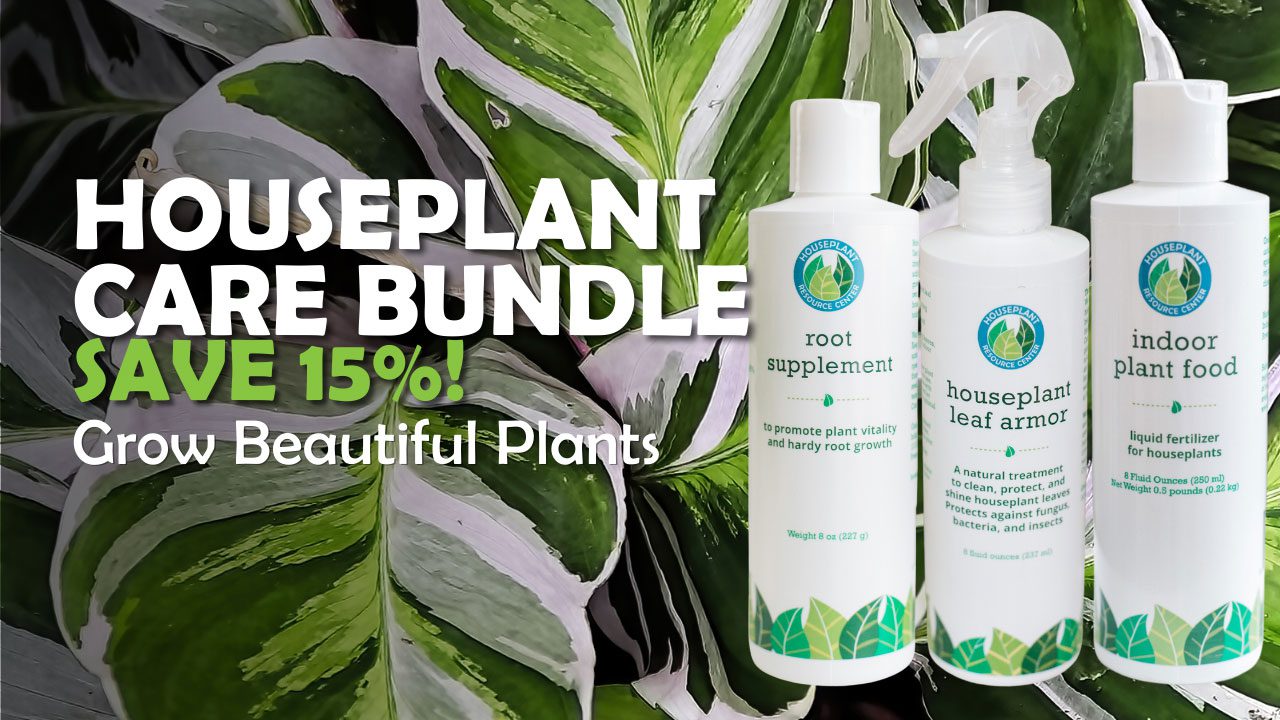Pothos is a classic houseplant known for its fast growth rate, lush foliage, and easygoing nature. It doesn’t require a lot of maintenance, which makes it an amazing plant for beginning indoor gardeners and seasoned houseplant owners alike! However, this plant isn’t foolproof. One of the most important elements of caring for a pothos plant is selecting the right potting mix. In this article, we’ll cover everything you need to know about choosing the best pothos soil.
Table of Contents
How to Select the Best Soil for Pothos Plants
A lot of beginning houseplant parents may mistakenly assume that all soils are created equal, but this couldn’t be further from the truth. A plant’s soil affects how plants absorb water and nutrients, and how well the roots are able to breathe and grow.
The Role of Soil in Plant Health
Soil is a crucial element of plant health. Plants absorb the majority of their water and nutrients from the soil, so it’s essential that there are actually nutrients present in the soil, and that conditions allow for the roots to absorb those nutrients.
It’s also important to note that the roots need to breathe. A soil that’s too heavy or compacted can smother or even drown the roots if it’s too dense and doesn’t drain quickly enough.
Soil is also home to a complex ecosystem of microorganisms that can contribute to a plant’s nutrient uptake, immune system, and other essential physical functions.
What Soil pH Levels Are Best for Pothos Plants?
pH is an often overlooked factor in healthy soil.
pH levels impact the bioavailability of nutrients present in the soil; so even if a soil is rich in nutrients, a plant may not be able to absorb those nutrients if the pH level is off.
Most plants prefer a fairly neutral pH level. Pothos plants will thrive in a soil with a pH of 6.1-6.8, which is very slightly acidic. Luckily, most potting soils fall within this range.
You may be able to find this on the label, and you can test your existing soil with a pH meter. (We like this meter because it also measures soil moisture and light levels!)
If you find that your pothos is already planted in soil with the wrong pH level, you’re better off repotting into a soil that’s more appropriate. While there are ways to adjust pH, like adding lime or sulfur to the soil, those methods are more practical for large-scale farming and less so for indoor plants.
What to Consider When Choosing Pothos Soil?
Good Drainage
Pothos plants are fairly drought-resistant, which is convenient for houseplant owners who tend to forget to water their plants. However, this also means that pothos plants don’t tolerate soggy soil.
When choosing or making a potting mix for your pothos plants, you’ll want a chunky, well-aerated soil that contains plenty of air pockets. When you water your plant, you want the water to drain within a few seconds and for the top half of the soil to feel dry a week to 10 days after watering.
Ingredients like vermiculite, perlite, and orchid bark can promote drainage in soil, so make sure to look for those in a soil you’re considering, or include them in your DIY mix.
Moisture Retention and Aeration
While pothos plants like fast-draining soil and prefer to dry out a little between waterings, you don’t want the soil to dry out too quickly, or you’ll end up with an underwatered plant!
The trick is to balance drainage with moisture retention so that the soil stays consistently damp and dries out gradually, while still remaining aerated and allowing the roots to breathe.
Ingredients like horticultural charcoal, peat moss, sphagnum moss, and coco coir can retain moisture and work well in pothos soil, as long as they’re balanced with plenty of aerating ingredients as well.
Nutrients
Plants get almost all the vitamins and minerals they need for growth and survival from their soil, so it’s important that your soil is rich in these nutrients.
Keep in mind that a growing plant can easily use up all the nutrients in its soil in just a few months, so after that, you’ll want to supplement with a gentle liquid fertilizer like Pothos Plant Food.
Ingredients like compost, worm castings, mulch, and manure can pack a nutritional punch and should be included in your pothos soil.
What Should Pothos Soil Contain?
We’ve listed some key potting mix components and why to include them, but here’s a review of common ingredients and the role they play in potting mix.
Moisture retention:
- Horticultural charcoal
- Coco coir
- Peat moss
- Sphagnum moss
Aeration and drainage:
- Orchid bark
- Vermiculite
- Perlite
Nutrition:
- Worm castings
- Manure
- Compost
- Biochar
- Mulch
Whether you purchase a ready-made pothos soil or choose your own, it should contain a combination of these three elements.
Mixing Your Own Pothos Soil
This is a great option because it allows you to control exactly what goes into your pothos potting mix. It’s also lots of fun!
Pothos Soil Mix Recipe
We love this aroid recipe from Kaylee Ellen on YouTube. It’s ideal for pothos plants and also great for other aroids like philodendrons, monsteras, and peace lilies!
In a large bowl, mix together:
- 5 parts orchid bark
- 4 parts coir
- 5 parts perlite
- 2 parts activated charcoal
- 2 parts worm castings
Simple!
Buying Ready-Mixed Soil For Pothos
If you’re not a DIY person or just don’t want to have to buy and store a bunch of separate ingredients, you can also find high-quality pothos soil that’s ready to go right out of the bag.
We recommend our Premium Indoor Plant Soil. This potting soil is a top-quality, premixed blend of coco coir, orchid bark, and perlite for the ideal balance of drainage and moisture retention. This mix also stays well-aerated thanks to the bark and perlite, and won’t compact easily, which will give your pothos plant’s roots plenty of space to grow and breathe!
This soil also utilizes cultured green waste compost and IBI-certified biochar to increase the retention of nitrogen, phosphorus, and other essential plant nutrients, as well as provide a diverse ecosystem of microbes that encourage nutrient uptake.
How Does Plant Size and Pot Type Affect Soil?
Pothos plants of any size will need similar soil, but keep in mind that your pot size and type can have an effect on how well the soil drains.
Make sure your pot has drainage holes, or your pothos will be sitting in soggy soil, no matter how quickly the potting mix drains.
It’s also helpful to note that terracotta pots have a moisture-wicking effect, which can cause the soil to dry out a little faster than it would in a plastic, concrete, or ceramic planter.
This doesn’t necessarily change the requirements for your soil, but it can impact your watering efforts. Keep drainage and material in mind as you pick out a planter!
Signs You’re Using the Wrong Soil Mix for Pothos Plants
How can you tell if you’re using the wrong soil for your pothos plants? This will usually show up as a “watering issue” because watering problems are often the result of improper soil drainage, not actually improper watering!
Some of these symptoms can also indicate a nutrient deficiency or the wrong pH level. Repotting into a more appropriate soil can fix these issues too.
Here are the warning signs that your pothos isn’t happy with its current potting mix.
Yellow Leaves
Yellow pothos leaves can have several causes. The most common cause is “overwatering,” which often means that the soil you’re using is too dense or compacted and isn’t draining quickly enough.
If your soil still feels wet a week or more after you watered or if you start to notice that it takes a while for the water to drain out the bottom of the pot when you water your plant, you might need to repot into a fresh potting mix that’s well-aerated and drains well.
Yellow leaves can also indicate thirst, which could mean your soil isn’t retaining water. If the soil has already dried out just a few days after watering, it’s possible you didn’t water deeply enough, but your soil could also be releasing water too rapidly. To test this, water your plant again by slowly adding water to the top. If it drains after two or three seconds, you may just need to soak the soil a bit more when you water. But if the water immediately and completely drains out, you may need a soil with a bit more loam to hold on to water for longer.
If the moisture of the soil seems appropriate, consider the last time you fertilized. If it’s been a while, you may want to use a little Pothos Plant Food to give your pothos a nutritional boost. If you’ve been fertilizing regularly, use a pH meter to test the pH of the soil.
(Side note, overfertilization can also cause yellowing leaves. Here are the signs of overfertilization and how to reverse it.)
Soft Plant Tissue
This is often a sign of overwatering, especially if this is accompanied by soft, dark-brown spots.
If you notice this sign, check the moisture level of the soil with your finger, a wooden stick, or a moisture meter. If it’s still wet long after you last watered, it might be time to repot into a lighter soil.
Wet Soil
If you notice your soil is staying wet for longer than 10 days at a time, it’s likely you’re using a potting mix that’s way too heavy. Repot into a lighter, more aerated soil even if your plant isn’t yet showing signs of overwatering like yellowing leaves or dark spots.

Root Rot
If you notice soft, dark-brown spots on the leaves or darkened, squishy stems, your pothos might have root rot. This is caused by harmful fungus or bacteria that flourish in overly wet conditions. This is a sign that you’re either watering too often or that your soil isn’t draining well.
Whatever the cause, the best way to treat root rot is to repot the plant into a clean pot with fresh soil and treat with a root supplement. Make sure to choose a quality soil like Indoor Plant Soil or another light, chunky mix with an appropriate pH level for pothos plants. If you notice any rotting roots, be sure to trim those away as well.
Pothos Soil FAQ
FAQ: Can you use cactus or orchid soil mixes with pothos plants?
Cactus and orchid soils are often used as quick go-to mixes for plants that like a lot of drainage. These mixes can work for pothos plants, but not all cactus or orchid mixes are created equal. Some drain too rapidly for pothos, while other, cheaper mixes might still retain too much water.
If the mix seems light, give it a try! When it’s overly chunky, you can try mixing a little peat moss in to increase moisture retention. Without a lot of bark or perlite, your soil may be too loamy. Try mixing some in to increase aeration.
After potting your pothos, keep a close eye on it to watch for signs that it may be unhappy with its soil.
Pothos Soil Final Thoughts
Choosing a pothos soil doesn’t have to be difficult! As long as the mix drains well but doesn’t go bone-dry within a few days, you’re in good shape. Mixing your own soil is always an option, as is Indoor Plant Soil. We can’t recommend quality soil with well-chosen ingredients enough!
Have more questions about your soil and other houseplant issues? For additional help and support, join our online community and more!
Houseplants for Millennials Book




